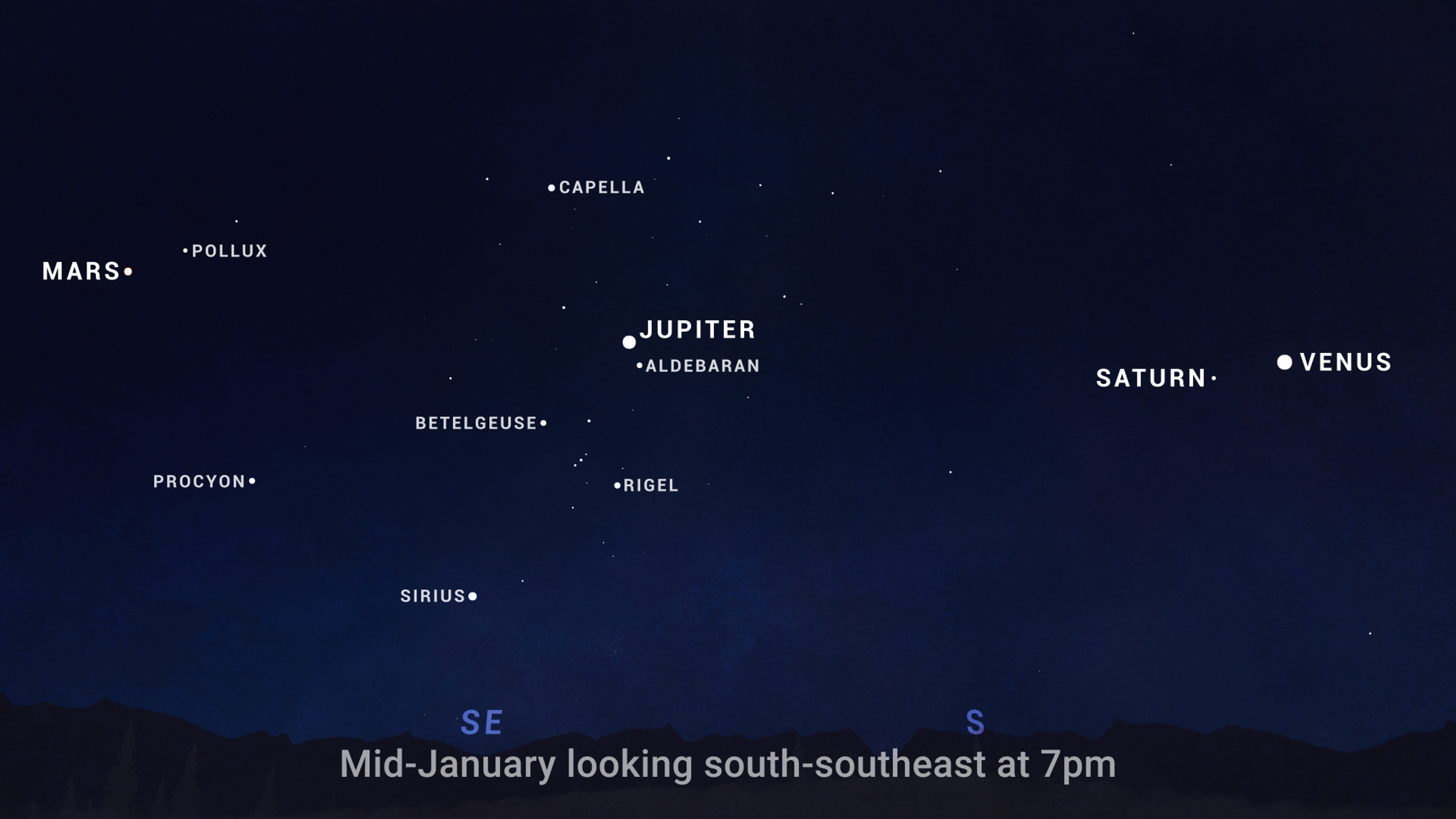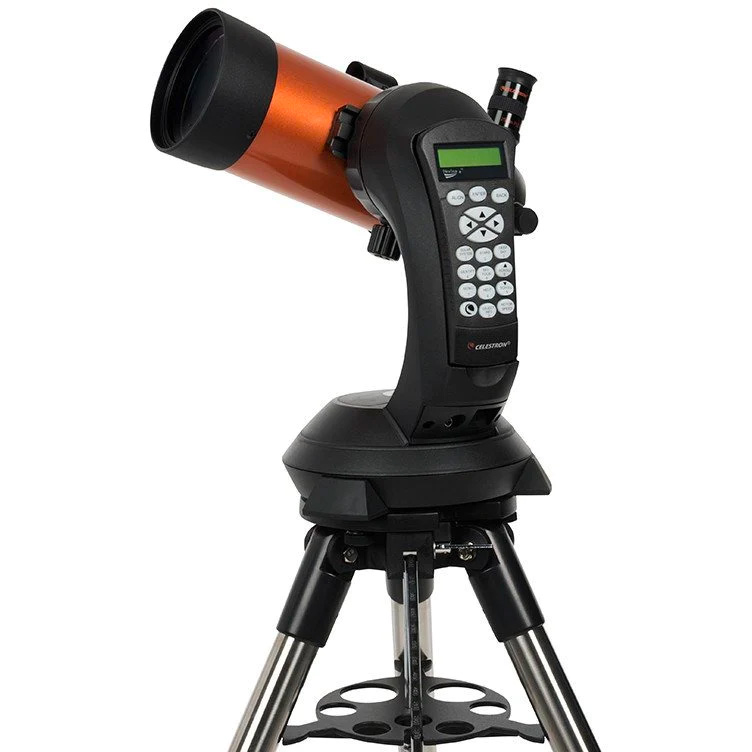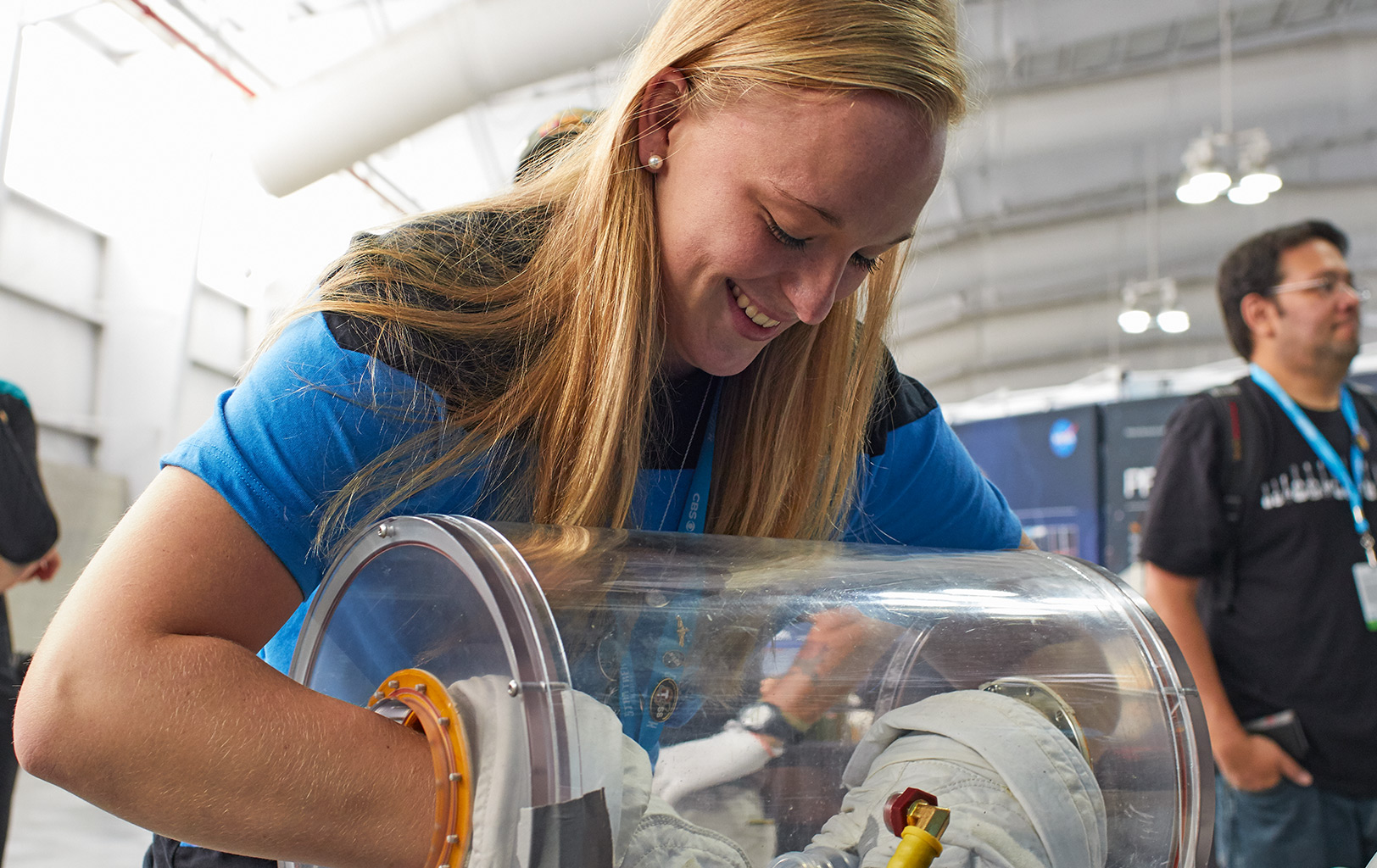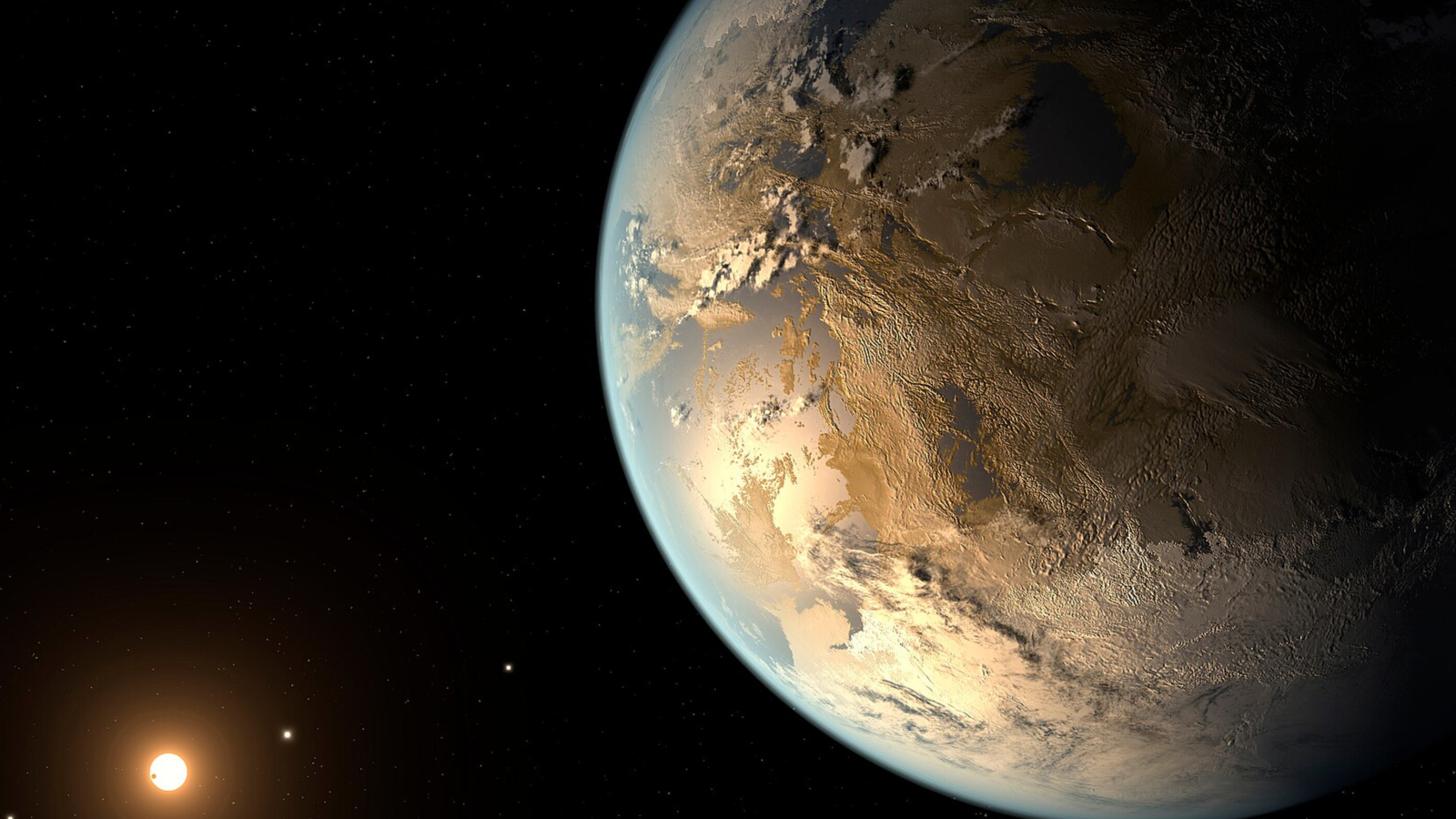Watch 'planetary parade' online for free on Jan. 25
"There's so much universe out there. We need as many people looking up as we can."
Six planets will be visible in the sky tonight, forming an astronomical alignment known as a "planetary parade," and you can watch it live online.
Mars, Jupiter, Uranus, Neptune, Saturn and Venus all meet up together on the same side of the sun in a wide arc above Earth — and most are visible to the naked eye under clear night skies. The Virtual Telescope Project in Italy is offering viewers a chance to catch this mesmerizing planetary alignment during a free webcast today (Jan. 25).
Starting at 12:30 p.m. ET (1730 GMT) on Saturday (Jan. 25), astrophysicist Gianluca Masi of the Virtual Telescope Project will stream live telescope views of all six of the planets in marching order. You can watch the livestream courtesy of the Virtual Telescope Project directly on their website or YouTube channel.

This type of astronomical lineup is fairly common, but what makes this month's planetary parade extraordinary is the number of visible bright planets, including Mars, Jupiter, Saturn and Venus, which doesn't happen every year. While those four planets are bright enough to be seen by the unaided eye, spotting Uranus and Neptune requires a pair of binoculars or a telescope.
Astronomers say that while this event might be overhyped as some type of "rare alignment," it's actually a regular occurrence in our night sky. "It's not exactly a rare event, but it's a rare enough event that allows us, in our really super fast-paced world, to give us an excuse to look up and be like 'Oh, wow. These are other worlds that we're looking at,'" Alex Polanski, an exoplaneteer from the Lowell Observatory, told Space.com. "It's really cool to be able to sort of get a family photo, in a way, of the entire solar system."

Want to see the planets of the solar system? The Celestron NexStar 4SE is ideal for beginners wanting quality, reliable and quick views of celestial objects. For a more in-depth look, see our Celestron NexStar 4SE review.
This planetary parade has been visible for most of the month, beginning around Jan. 18, and will continue through early February. The planets in our solar system orbit around the sun at different speeds along a plane called the ecliptic. The planets' varying orbital speeds lead to an occasional line up on the same side of the sun when viewed from Earth.
"Hopefully that inspires a few people to keep learning and keep exploring," Polanski said. "There's so much universe out there. We need as many people looking up as we can."
Get the Space.com Newsletter
Breaking space news, the latest updates on rocket launches, skywatching events and more!
The four bright planets will be easily visible in the first couple of hours after sunset. Venus and Saturn will be near each other in the southwest, while Jupiter rises high overhead and Mars appears in the east. Neptune will be just above Venus and Saturn, while Uranus hovers just above Jupiter. However, both Uranus and Neptune are too far from Earth and thus too dim to be seen with the naked eye.
To view all six planets together in one sweeping view, be sure to watch the live online feed from the Virtual Telescope Project, during which Masi will provide commentary on the spectacular alignment.
For more skywatching events this month, don't miss our night sky, January 2025 guide and our night sky for tonight blog, updated each weekday with what you can see throughout the week.
And if you're looking for binoculars or a telescope to observe the planets, check out our guides for the best binoculars and the best telescopes to find options that work for you Be sure to also check out our guides for tips on how to photograph the planets.
Editor's Note: If you snap a good photo of the planet parade this month, and would like to share it with Space.com's readers, send your photo(s), comments, and your name and location to spacephotos@space.com.
Join our Space Forums to keep talking space on the latest missions, night sky and more! And if you have a news tip, correction or comment, let us know at: community@space.com.

Samantha Mathewson joined Space.com as an intern in the summer of 2016. She received a B.A. in Journalism and Environmental Science at the University of New Haven, in Connecticut. Previously, her work has been published in Nature World News. When not writing or reading about science, Samantha enjoys traveling to new places and taking photos! You can follow her on Twitter @Sam_Ashley13.

